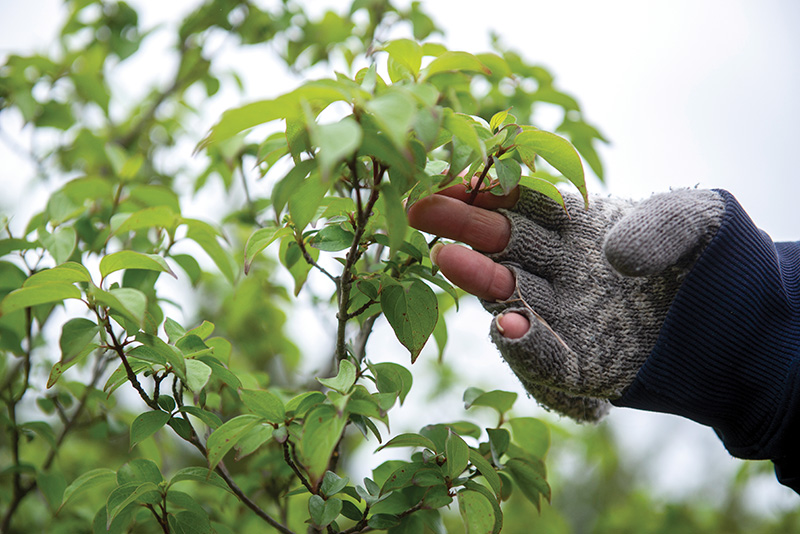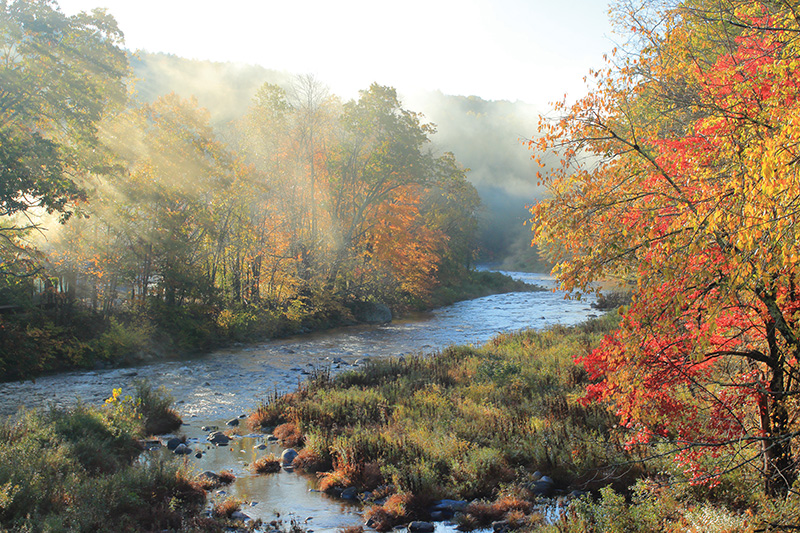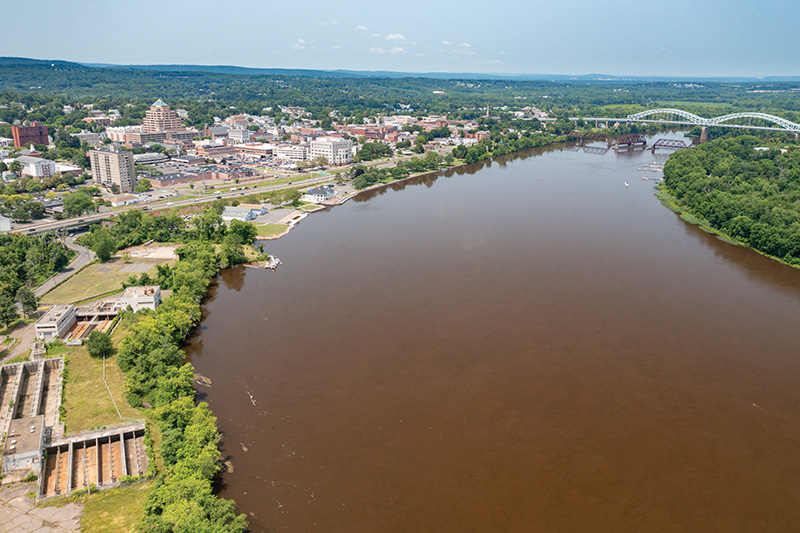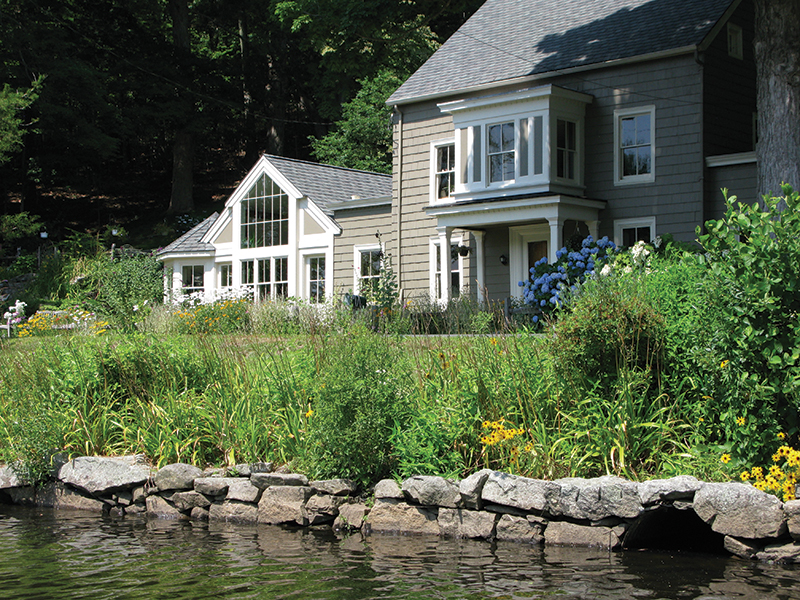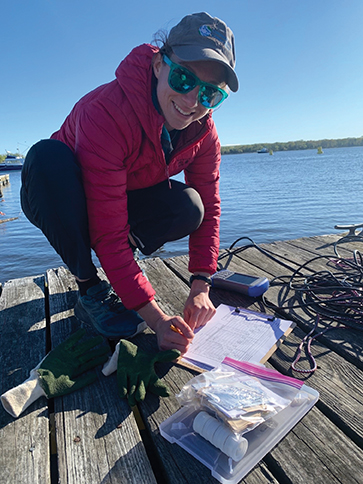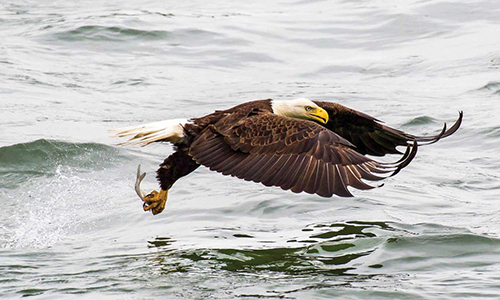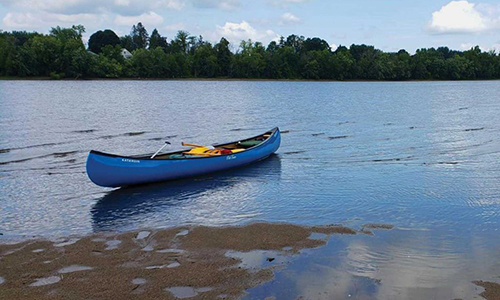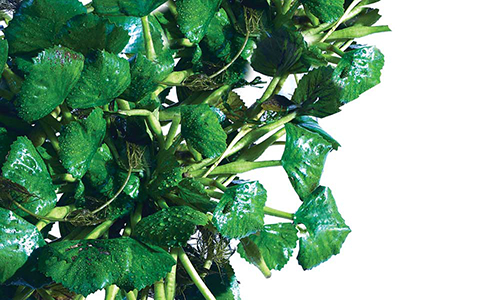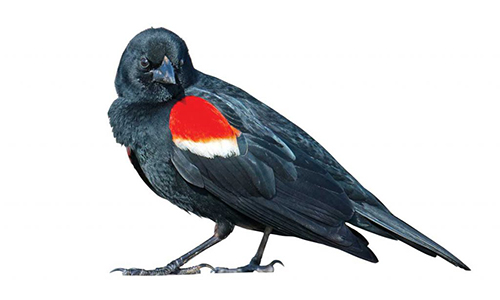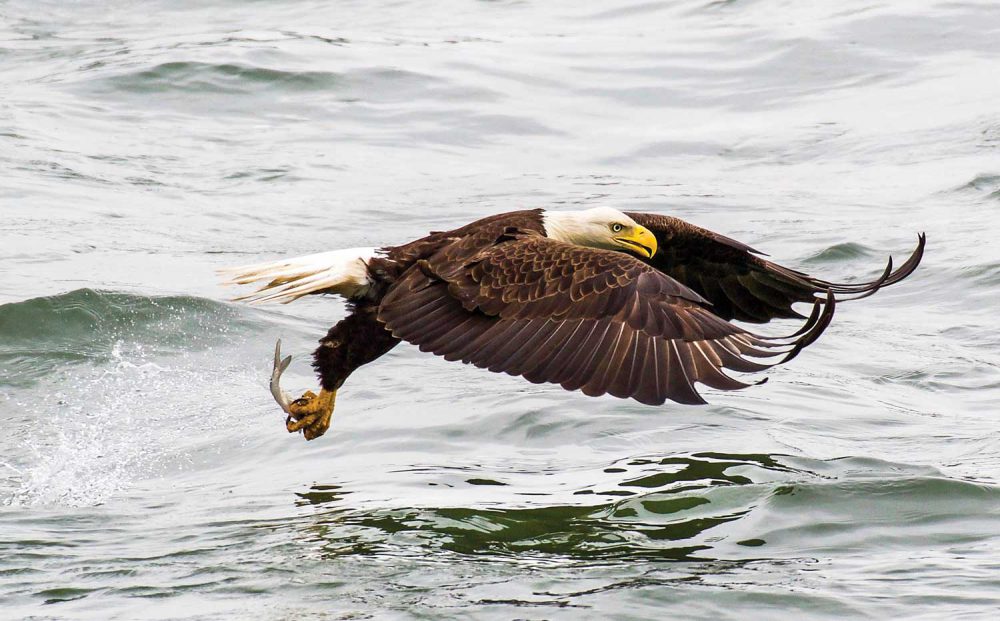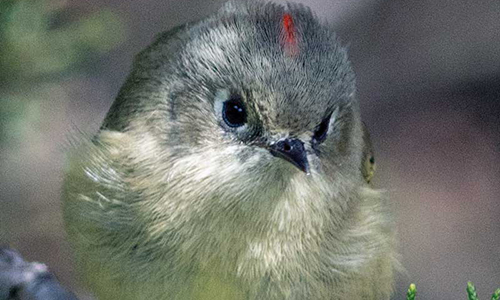Just as birds need healthy forests and grasslands, protected wetlands, and connected floodplains for habitat, Vermont’s human communities need those same landscape features to survive the onslaught of weather shifts caused by global climate disruption.
Central Watershed Outings: Hidden Gems of the Wild and Scenic Westfield River
Set on a historic railroad line in the scenic Berkshire foothill towns of Middlefield and Chester, Massachusetts, the Keystone Arches Trail offers a fine sampling of the Westfield River watershed’s rich natural resources and history.
Riverbend Project and
the Mayor of Middletown
The river stank. For decades, towns, industries, and farms from Vermont to Long Island Sound had dumped vile and destructive wastes of every kind into her waters.
Tour de Lyme
Octogenarians to tykes unite and pedal the pavement and trails for a good cause.
Lawn Care We Can Live With
Ah, spring. For the gardeners among us it is the long-awaited return to being outside, smelling the soil, welcoming the sun. And regardless of how you spent your winter month —planning or just anticipating—the gardening season is now upon us. And suddenly there’s oh so much to do.
Kelsey Wentling- CT River Conservancy River Steward
Five a.m. Streaks of soft pink light the predawn sky. It’s late June, and I’m on my way to Essex to meet Kelsey Wentling, a river steward with the Connecticut River Conservancy.
Bald Eagles of the Connecticut River
Dead drifting my canoe along a stretch of the upper Connecticut River a few miles upstream of the Wilder Dam, a flash of white against the dark green pine background revealed the perching spot of an adult Bald Eagle.
Paddling Home from School
A dreamed of trip becomes a reality— paddling down our Connecticut River
The Estuary’s Most [un]Wanted Plant is Under Water
The aquatic plant known as Trapa natans has the unfortunate common name of water chestnut, leading people who are first hearing about it to think that it may well be a bonus source of that good appetizer, with a strip of bacon wrapped around it.
A Rude Awakening and Call to Action
One of us visited the heart of the Soviet Union during
its latter days and was struck by the absence of
birds in general, and certainly the absence of avian
variety. Among the major differences between the USSR
and North America was the lack of proven, sensible
environmental laws and regulations governing such
things as pesticides, hedgerow preservation, and land use
in the Soviet Union.
Letter from the Publisher:
estuary…A Magazine about Life of the Connecticut River
A Letter from the Editor:
If you are reading this, there is an excellent chance you love the River as much as we do. The more we speak with readers like you, the more we hear new and interesting stories about the River. This is an invitation to submit those stories to us so that we might share them with other readers. We have a process for doing this. Go to estuarymagazine.com/submissions and read the detailed instructions on how to submit story ideas. You can also submit letters to the editor.
Send Us Your Best
This dramatic photo was taken by Frank Dinardi an amateur wildlife photographer from Connecticut.
Vermont Center for Ecostudies
Just about a mile as the crow (or cardinal, or chickadee) flies from the Connecticut River’s western bank in Norwich, Vermont, sits a nondescript building that houses one of the most effective wildlife conservation organizations in the Northeast that
you’ve probably never heard of: the Vermont Center for Ecostudies (VCE).

